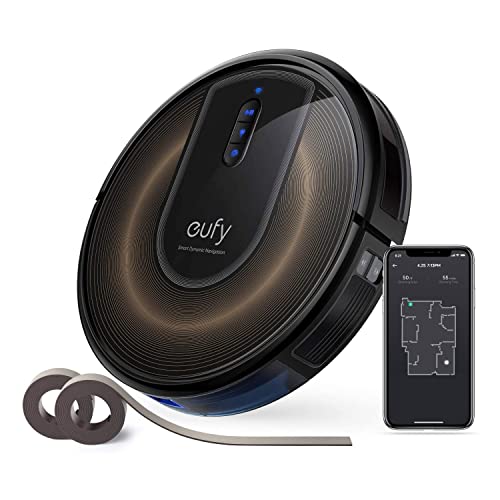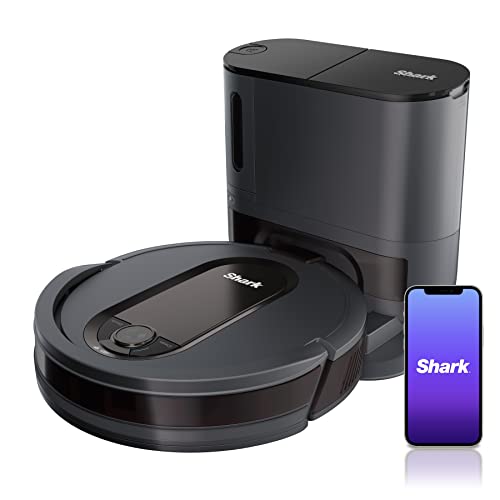
Robot Vacuum Mops
Add a review FollowOverview
-
Founded Date 30 May 1925
-
Sectors Automotive Jobs
-
Posted Jobs 0
-
Viewed 82
Company Description
The Cleaning Robot Mop And Vacuum Awards: The Best, Worst And The Most Unlikely Things We’ve Seen
 How to Take Care of a Robot Mop and Vacuum
How to Take Care of a Robot Mop and Vacuum
A robot vacuum or mop can help you save time when cleaning. They also require regular maintenance, such as emptying the dustbins, cleaning the disposable pads accordance with the manufacturer’s instructions or removing the disposable ones and keeping the sensors cleaned.
App integration lets you create schedules and power modes, as well as save maps and adjust settings.
1. Empty the Dirt Bin
Regular maintenance is required for the majority of robot vacuums and mops. This includes emptying the dirt bins, and washing pads and keeping track of replacement consumables. The more you take care of these components, the longer your robot mop and vacuum cleaner will last. Some cleaning robots also require a bit of extra attention, especially those with water tanks.
First, ensure that the dust bin is completely cleaned after each cleaning session. This is one of the simplest tasks you can accomplish, but it is vital for the smooth operation of your robot. You should also keep your filter clean regularly. Refer to the user’s manual to determine how and when you should clean your filters.
Although the mopping feature on your robot can remove lots of dust, a number small particles may still get caught in the cracks and gaps of your flooring. These include skin particles, dandruff, mites, dirt and pet hair. To prevent these particles from causing health issues, it is important to regularly make use of a vacuum cleaner or sweeping robots to clean these areas.
Additionally, if you plan on using your mopping robot, it is essential to choose a model with top-of-the-line hardware and large dust and water tanks. LEGEE, for example is one of the largest dust bins as well as water tanks among its competitors, which means you won’t need to stop cleaning or interrupt your robotic mop to refill the tank.
Do not add vinegar or floor cleaners into the tank that holds water for your robot mop unless have been instructed to do so by the manufacturer. The use of these chemicals can cause damage to the robot and could void its warranty.
A robot mop and vacuum is a great method to make your life easier so that you can concentrate on more pressing matters, such as your family or work. Some dirt and stains are too hard for the robot to take on. You should also periodically employ a traditional vacuum cleaner to clean areas your robot cannot reach.
2. Clean the Cleaning Pads
Depending on the purpose you use your robot mop for the pads can become dirty or even stained. This is why it’s crucial to clean the cleaning pads regularly. This can be accomplished by throwing them in the washer with regular loads of laundry or by hand washing them. Avoid using fabric softener or dryer sheets as they reduce the absorbency of the pad and could cause it to stop working effectively.
If your mop doubles as a vacuum cleaner, it will require its dust bin to be cleaned and cleaned periodically. Hybrid models that can vacuum and sweep with a dry mop are also affected. Many robot mops have brush attachments which need to be cleaned.
You should always rinse the mop pads thoroughly to get rid of all dirt and grime. You can also soak the pads in warm water for about a minute to remove any debris that has stuck. After you’ve cleaned them and dry, you can let them dry on the air or use a low-heat setting in the dryer. It is recommended to clean the pads every two to three months.
During the cleaning process, mop or vacuum cleaners could pick up small particles that could damage your robot’s sensors. You can prevent this by wiping your sensors clean with a microfiber cloth every now and again. This will make it easier for the robot to navigate its motion through the room without crashing into furniture or walls.
Sensors on the base of most robot vacuums and mops are used to detect obstacles, ensuring that the machine does not get stuck in tight spaces. You’ll need to clean them frequently because they can get clogged up with dust and other particles.
Certain robot vacuums come with self-cleaning features that you can use after every use. Check the manufacturer’s website to see if your model includes this feature. The process typically takes between two and three minutes. It can be run through an app or button located on the robot. A robot vacuum and mop must be running this cycle regularly to maintain the performance of its sensors and other parts.
3. Clean the Charging Station
The majority of robot mops spray cleaning solution directly onto the floor to soften stains and then scrub them off with scrub pads. Some use disposable mop pads and others are designed to be washed and reused. If you decide to use disposable or reusable mop pads it is important to empty and wash them between cleaning sessions in accordance with the instructions of the manufacturer. It’s recommended to drain the mop base or docking station dry between uses, in order to stop mildew from developing.
Like vacuum cleaners, robot mop and vacuum/mop combos require regular maintenance to keep running smoothly. The maintenance tasks include emptying the dust bin cleaning the pads, and occasionally cleaning the sensors. If you own a robot mop that has dirt sensors it is possible to gently wipe it down every several cycles to remove dust that could hinder the sensors and lead to errors in navigation.
Many robot mop models come with a smart app that allows you to save your home’s maps as well as set up cleaning schedules and even track the time when the machine requires maintenance. If you plan on purchasing a mop, you should look for one that is connected to Wi-Fi so that you can use the app to control it from any location.
The Samsung Powerbot Vac + Mop is a highly rated model that includes smart features that assist in cleaning floors without you being home. The map function lets you to set virtual boundaries and no-go zones for the robot. You can also use it to manually direct it to clean a specific area of the room. Its mopping and vacuuming capabilities are able to work on carpeting and hard floors, which makes it a great choice for homes that have both.
Other innovative features of this robot that is 2-in-1 include an object avoidance sensor that helps it navigate between furniture and other objects and self-emptying garbage bins that reduce the amount of clean-up needed after each use. It is also programmable to run even when you’re not and is a great option for busy homeowners. It’s also quieter than other vacuums, which can be a benefit for those who have pets or children who are sensitive to noise.
4. Clean the Sensors
Apps are available for most robot vacuums, as well as some vacuum and mop combination models. They allow you to create automatic cleaning schedules and define cleaning modes. You can also monitor the frequency of maintenance. You can also use the app to start cleaning, stop and manually clean your robot from any place within your home, and also alter the settings of it.
The app is especially useful if your robotic cleaner has mapping capabilities, such as lasers, cameras or optical dToF, which allow it to save an image of the room as well as navigate around furniture. These features can decrease the frequency of recurring staining on your floors and make cleaning less time-consuming.
If the sensor for your robot’s mapping becomes dirty, it may have difficulty navigating through your home. Cleaning these sensors is crucial similar to cleaning a smartphone screen or camera lens. The best Scrubbing robot mop way to do this is by using a clean, dry cloth. If you use a moist or damp cloth or cleaner, you could harm the sensors which could cause them to malfunction.
Similarly, it’s a good idea to clean the brushes of your robot vacuum regularly. This will stop hair tangles from developing and slowing down the motor and make it easier for your robot to clean up particles. It’s also recommended to wipe off the primary brush roll because it’s responsible for removing dirt and will accumulate lots of dust over time.
 The last thing to remember is to only use the cleaners recommended by the robot’s manufacturer. Utilizing other floor cleaners can damage the machine and void your warranty. The majority of brands recommend the combination of water and vinegar, or a cleaning solution that is designed specifically for their robot. Do not pour hot water or a solution that contains abrasives, since they can damage internal components and leave an unpleasant dirt on your floors. If you have questions check out the owner’s manual for detailed instructions on how to clean your robot cleaner. This will help ensure it runs efficiently and lasts longer.
The last thing to remember is to only use the cleaners recommended by the robot’s manufacturer. Utilizing other floor cleaners can damage the machine and void your warranty. The majority of brands recommend the combination of water and vinegar, or a cleaning solution that is designed specifically for their robot. Do not pour hot water or a solution that contains abrasives, since they can damage internal components and leave an unpleasant dirt on your floors. If you have questions check out the owner’s manual for detailed instructions on how to clean your robot cleaner. This will help ensure it runs efficiently and lasts longer.



